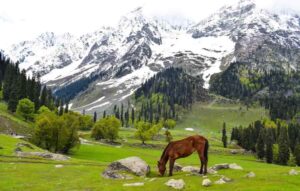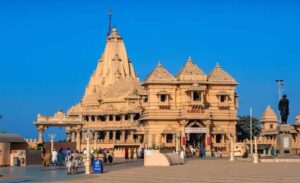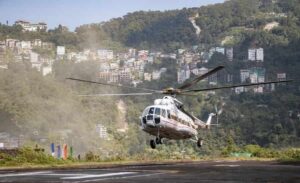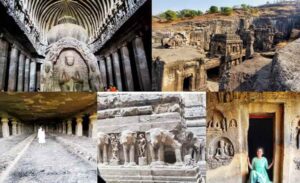Kailash Mansarovar Yatra Travel Tips for 2024
Embarking on the pilgrimage to Kailash Mansarovar is a journey that transcends the physical realm, delving deep into the spiritual core of human existence. Situated amidst the rugged terrain of the remote western region of Tibet, this mystical land beckons spiritual seekers from across the globe with promises of enlightenment, transformation, and divine connection. In this comprehensive guide, we embark on a journey of discovery, unraveling the profound significance of Kailash Mansarovar across various religious and cultural contexts. From the historical roots of its revered landmarks to the practicalities of planning and executing the pilgrimage, we delve into every facet of this sacred odyssey. Additionally, we provide indispensable travel tips to equip pilgrims with the knowledge and preparation necessary to navigate the challenges and embrace the blessings of the Kailash Mansarovar Yatra.
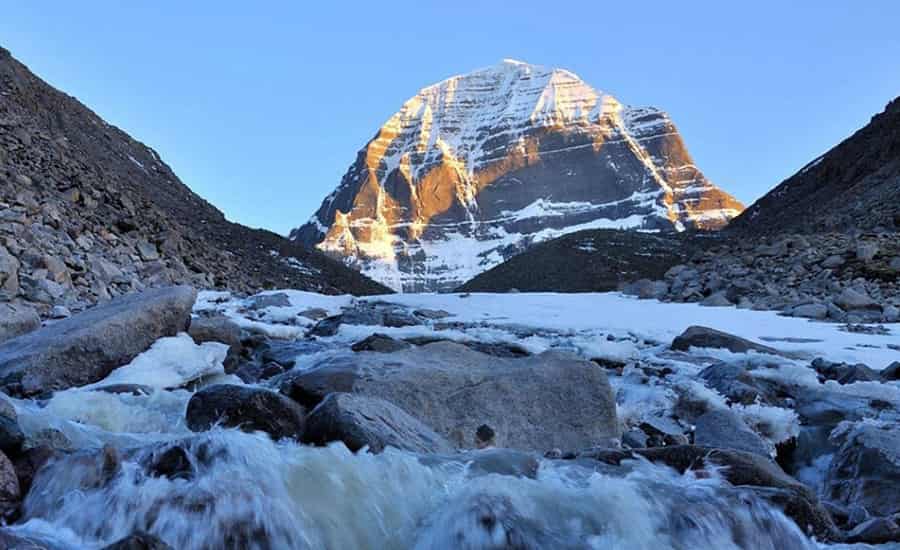
Significance of Kailash Mansarovar
Nestled amidst the towering peaks of the Himalayas, Kailash Mansarovar emerges as a beacon of spiritual reverence, drawing pilgrims from Hinduism, Buddhism, Jainism, and the Bon religion. Mount Kailash, revered as the abode of Lord Shiva in Hindu mythology, stands as a symbol of cosmic consciousness and spiritual ascension. Mansarovar Lake, with its crystal-clear waters reflecting the purity of the soul, holds sacred significance across various religious traditions. Explore the historical and cultural tapestry woven around these sacred landmarks, unraveling the profound symbolism and spiritual energy that permeates the region.
The Pilgrimage Route and Itinerary
Embarking on the Kailash Mansarovar Yatra entails traversing a sacred pilgrimage route steeped in mythology, spirituality, and awe-inspiring natural beauty. This journey of a lifetime offers pilgrims the opportunity to circumambulate Mount Kailash, bathe in the purifying waters of Mansarovar Lake, and immerse themselves in the timeless rituals and traditions that define this sacred odyssey. Let’s delve into the pilgrimage route and itinerary, outlining the key stops, challenges, and spiritual significance along the way.
Commencing the Journey
The pilgrimage typically begins in the small town of Darchen, situated at the base of Mount Kailash. Pilgrims gather here, filled with anticipation and reverence, before embarking on the sacred circumambulation of the holy mountain.
Circumambulating Mount Kailash
The circumambulation, known as the kora or parikrama, is the central ritual of the Kailash Mansarovar Yatra. Pilgrims embark on a journey of approximately 52 kilometers (32 miles) around the base of Mount Kailash, following a clockwise path that symbolizes spiritual progression and the cycle of life and death. The kora is typically completed over the course of three days, with each segment marked by sacred landmarks and breathtaking vistas.
Key Stops Along the Route
Throughout the pilgrimage, pilgrims encounter a series of sacred sites and landmarks that hold deep spiritual significance:
- Yama Dwar: This is the starting point of the kora, where pilgrims pass through a narrow gateway symbolizing the entrance to the spiritual realm.
- Dirapuk Monastery: Located at the base of Mount Kailash, this monastery offers pilgrims a place for rest and reflection before continuing the ascent.
- Dolma La Pass: Situated at an altitude of over 5,600 meters (18,373 feet), Dolma La Pass is the highest point of the kora and represents a spiritual threshold where pilgrims confront their inner challenges and fears.
- Gauri Kund: Pilgrims descend from Dolma La Pass to Gauri Kund, a sacred bathing pool believed to cleanse sins and bestow blessings upon those who immerse themselves in its waters.
- Zuthulphuk Monastery: Pilgrims spend the final night of the kora at Zuthulphuk Monastery, reflecting on their spiritual journey and preparing for the final stretch.
Completing the Circumambulation
After three days of arduous trekking, pilgrims complete the circumambulation and return to Darchen, filled with a profound sense of accomplishment and spiritual renewal. The journey back to Darchen offers pilgrims the opportunity to reflect on their experiences, share stories with fellow travelers, and express gratitude for the blessings bestowed upon them during the pilgrimage.
Ritualistic Immersion in Mansarovar Lake
Following the circumambulation, pilgrims make their way to Mansarovar Lake, a sacred body of water revered for its purifying properties and spiritual significance. Here, pilgrims perform ritualistic baths, prayers, and offerings, seeking divine blessings and purification of the soul. The tranquil shores of Mansarovar Lake provide a serene setting for reflection, meditation, and communion with the divine.
Return Journey
After completing the rituals at Mansarovar Lake, pilgrims begin their journey back to their point of origin, whether it be Kathmandu, Nepal, or another gateway city. The return journey offers pilgrims the opportunity to integrate their spiritual experiences, carry the blessings of Kailash Mansarovar with them, and share their journey with friends and family.
Practical Considerations Before the Journey
Prepare for the pilgrimage of a lifetime with comprehensive guidance on practical considerations and logistical planning. Navigate the labyrinth of permits and visa procedures, ensuring seamless passage to the sacred realm of Kailash Mansarovar. Prioritize health and fitness as you embark on a rigorous journey, equipping yourself with essential gear and provisions to weather the challenges of high altitude and harsh terrain. From acclimatization strategies to accommodation arrangements, empower yourself with the knowledge and preparation necessary to embark on this sacred odyssey.
Best Time to Visit
The best time to undertake the Kailash Mansarovar Yatra is typically from May to September, during the summer months when the weather is relatively mild and conducive to pilgrimage activities. Understanding the weather conditions and temperature variations during this period is crucial for planning a safe and comfortable journey to this sacred destination.
Weather Conditions
During the summer months, Kailash Mansarovar experiences relatively stable weather conditions, with clear skies and minimal precipitation. However, it’s essential to be prepared for sudden changes in weather, as the region is known for its unpredictable climate patterns. While the days are generally sunny and pleasant, evenings and nights can become chilly, especially at higher altitudes.
Temperature Variations
The temperature in Kailash Mansarovar can vary significantly between day and night, as well as between different altitudes along the pilgrimage route. During the daytime, temperatures typically range from 15°C to 25°C (59°F to 77°F) in lower-lying areas, providing comfortable conditions for trekking and outdoor activities. However, as pilgrims ascend to higher elevations, such as during the circumambulation of Mount Kailash, temperatures may drop to around 5°C to 10°C (41°F to 50°F) or even lower, particularly at night.
Altitude Considerations
Another factor to consider when planning the timing of the pilgrimage is altitude. Kailash Mansarovar and its surrounding areas are located at high altitudes, with elevations ranging from 4,600 meters (15,092 feet) at Mansarovar Lake to over 5,600 meters (18,373 feet) at Dolma La Pass. Pilgrims need to acclimatize gradually to the altitude to avoid altitude sickness and related health issues. The summer months provide optimal conditions for altitude acclimatization, as the milder weather allows pilgrims to adjust more comfortably to the thin air at high elevations.
How to Reach Mansarovar Yatra
Pilgrims embarking on the Kailash Mansarovar Yatra have two main routes for reaching the sacred destination: the Indian route and the Kathmandu, Nepal route.
Indian Route
- The Indian route typically begins with a journey to Delhi, the capital city of India, followed by a domestic flight to either Lucknow or Allahabad.
- From Lucknow or Allahabad, pilgrims proceed to the Indian border town of Nepalgunj in the state of Uttar Pradesh.
- From Nepalgunj, the journey continues by road to the Nepal-China border town of Hilsa/Simikot.
- After crossing the border, pilgrims traverse through Taklakot (Purang), Saga, Manasarovar Lake, and finally reach Mount Kailash, following the designated route for the yatra.
Kathmandu, Nepal Route
- Pilgrims traveling via the Kathmandu route begin their journey in Nepal’s capital city, Kathmandu.
- From Kathmandu, pilgrims fly to Tribhuvan International Airport and proceed to obtain the necessary permits and visas for the pilgrimage.
- The journey continues by road from Kathmandu to the Nepal-China border town of Rasuwagadhi/Syabrubesi, which takes approximately 6-8 hours.
- After crossing the border, pilgrims travel through Kyirong (Gyirong) in Tibet, China, and proceed to Saga, Manasarovar Lake, and Mount Kailash, following the prescribed route for the yatra.
Travel Tips for Kailash Mansarovar Yatra
Embarking on the Kailash Mansarovar Yatra requires careful planning, preparation, and adherence to essential travel tips to ensure a safe, comfortable, and spiritually enriching pilgrimage experience. Here are some key travel tips to consider:
- Physical Fitness and Health: Prioritize physical fitness and undertake regular exercise to prepare for the rigors of the pilgrimage. Consult with a healthcare professional before the journey and carry necessary medications for altitude sickness and other health conditions.
- Packing Essentials: Pack lightweight, durable clothing suitable for varied weather conditions, including warm layers, rain gear, sturdy hiking boots, and sunscreen. Carry essential items such as a first aid kit, toiletries, water purification tablets, and a flashlight.
- Altitude Acclimatization: Allow time for proper altitude acclimatization by ascending gradually and staying hydrated. Listen to your body and rest as needed to avoid altitude-related illnesses such as altitude sickness.
- Respect Local Customs: Respect the sacredness of the pilgrimage sites, adhere to local customs and traditions, and dress modestly while visiting temples and monasteries. Seek permission before taking photographs and refrain from littering or disturbing the natural environment.
- Stay Hydrated and Nourished: Drink plenty of water to stay hydrated at high altitudes and consume nutritious meals to maintain energy levels throughout the pilgrimage. Carry snacks and energy bars for quick replenishment during treks.
- Safety Precautions: Exercise caution while trekking and adhere to safety guidelines provided by tour guides or local authorities. Stay informed about weather forecasts and be prepared for sudden changes in weather conditions.
- Travel Insurance: Purchase comprehensive travel insurance that covers medical emergencies, trip cancellations, and evacuation services to safeguard against unforeseen circumstances during the pilgrimage.
- Cultural Sensitivity: Interact respectfully with local communities and fellow pilgrims, embracing the diversity of cultures and languages encountered along the journey. Seek opportunities for cultural exchange and mutual understanding.
- Spiritual Reflection: Take time for spiritual reflection and meditation amidst the serene landscapes of Kailash Mansarovar, allowing the sacred energy of the region to guide your inner journey towards self-discovery and enlightenment.
FAQs
Is it safe to travel to Kailash Mansarovar?
Yes, with proper preparation and adherence to safety guidelines, traveling to Kailash Mansarovar is generally safe. However, it is essential to be aware of altitude-related risks and weather conditions.
What is the duration of the Kailash Mansarovar Yatra?
The duration of the pilgrimage varies depending on the chosen route and itinerary, but it typically ranges from 10 to 21 days.
What are the accommodation options during the pilgrimage?
Accommodation options include guesthouses, tents, and monasteries along the pilgrimage route. Basic amenities such as food, water, and sanitation facilities are available at designated stops.
What is the significance of Mansarovar Lake?
Mansarovar Lake is revered as a sacred body of water that holds purifying properties in Hindu and Buddhist traditions. Pilgrims often take ritualistic baths in its pristine waters to cleanse sins and attain spiritual blessings.
Are there any age restrictions for participating in the yatra?
While there are no strict age restrictions, participants should be in good health and physical condition to undertake the rigorous trekking involved in the pilgrimage.
Conclusion
The Kailash Mansarovar Yatra stands as a sacred pilgrimage of unparalleled spiritual significance, offering pilgrims the opportunity to embark on a transformative journey of self-discovery and divine connection amidst the majestic Himalayan landscapes. By adhering to essential travel tips, pilgrims can navigate the challenges of the pilgrimage with confidence and grace, embracing the blessings of Kailash Mansarovar and emerging spiritually enriched from the sacred realm of Lord Shiva’s abode. Plan your journey with a Kailash Mansarovar tour package to ensure a seamless and fulfilling experience.
Suggested to Read:

